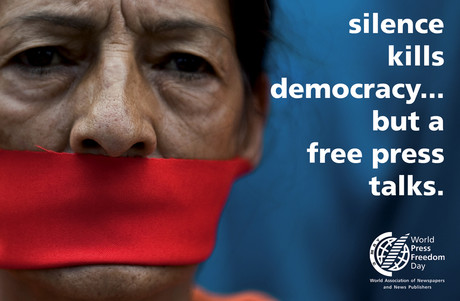By Colette Davidson and Javier Garza
Their deaths shook the nation. Two journalists and a driver from the newspaper El Comercio in Quito were kidnapped by a criminal group related to the drugs trade on March 26, on the southern border of Colombia and Ecuador, before being killed by their captors. The team had been reporting on rising crime in the area.
“The moment of the kidnapping of the El Comercio team and their subsequent murder generated a need [for more safety training],” says Francisco Rocha, the Executive Director of the Association of Newspaper Editors. “Although we have dealt with the issue, we have not really confronted how it happened.”
Up until then, journalists in Ecuador lacked experience in dealing with issues related to organized crime, says Rocha. Unlike Mexico or Colombia, where reporters have faced the dangers of covering organized crime for several years, Ecuador has thus far largely been spared.
“Our Ecuadorean partners suggested a safety workshop that would address specifically how to cover organized crime and all its implications,” says Javier Garza, WAN-IFRA’s SMS programme regional manager for Latin American. “Investigative work, traveling to areas with high criminal activity, covering crime related to drug trafficking, etc.”
On 3 May, 23 journalists met in Guayaquil, with an additional 30 coming together in Quito on 5 May, for safety workshops organized by the Association of Ecuadorean Newspaper Editors, PlanV, El Comercio and WAN-IFRA’s SMS programme.
During the two days, Garza spoke about risk evaluation, how to develop safety protocols, psychological care and legal tools, while Colombian journalist and expert in drug trafficking Gustavo Duncan shared his knowledge of the drug business in Colombia and Ecuador, as well as the effects of Colombia’s peace process with the FARC guerilla group on drug trafficking.
Safety experts analyzed the April kidnapping to look for clues as to what safety measures the journalists took – or didn’t take – in order to develop protocols for journalists going into similar situations in the future.
On 4 May, Rocha joined Garza and Duncan before approximately 200 students at the Universidad de Las Américas in Quito to speak about the dangers of reporting on organized crime.
Participant Ana María Cañizares Sánchez says that hearing how the experts had handled similar situations in Colombia and Mexico allowed her to learn from their experiences.
“The workshop had a really positive impact,” says Cañizares Sánchez, a journalist at CNN in Ecuador. “I could see that my co-workers were very interested in the topic and for me personally, I was able to speak to other professionals about drug trafficking as well as different guerilla and criminal groups. It was so successful that we didn’t want the workshop to end.”
The workshop was an especially powerful experience, given the current environment in Ecuador.
“Security training is always important, but unfortunately with the kidnapping and murder of the three journalists, knowing how to work in this kind of atmosphere is crucial,” says participant Saudia Levoyer, Director of Communication at the Universidad Andina Simon Biolivar as well as a journalist and editor. “I believe that this crime woke us up in terms of how we should be covering these types of issues. For several years, the press has covered this kind of news without realizing that we were in danger.”
Levoyer says that following the training, journalists in Ecuador will not only have the necessary tools in hand to confront dangerous situations while reporting, but can discuss with their editorial teams about how to work conscientiously on drug trafficking and crime in Ecuador.
While the training had an immediate impact on participants, offering them practical tools to use on the job, it also intended to take the discussion about safety forward.
“While this workshop was reacting to a specific situation, the goal is to make journalists proactive when it comes to assessing their security,” says Rocha, “and taking steps to mitigate risk.”



